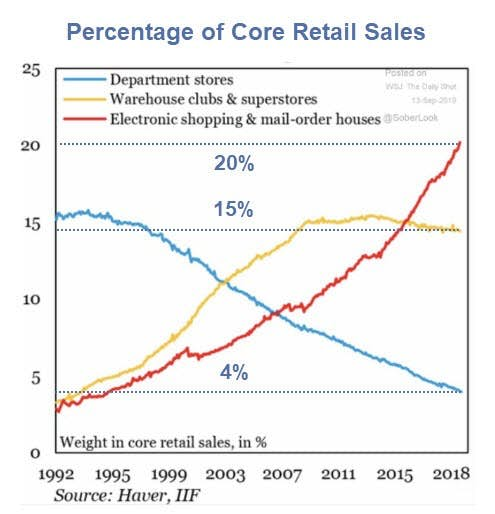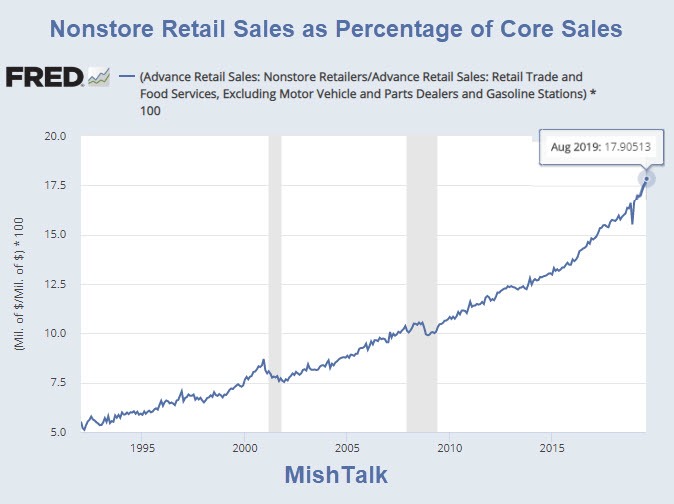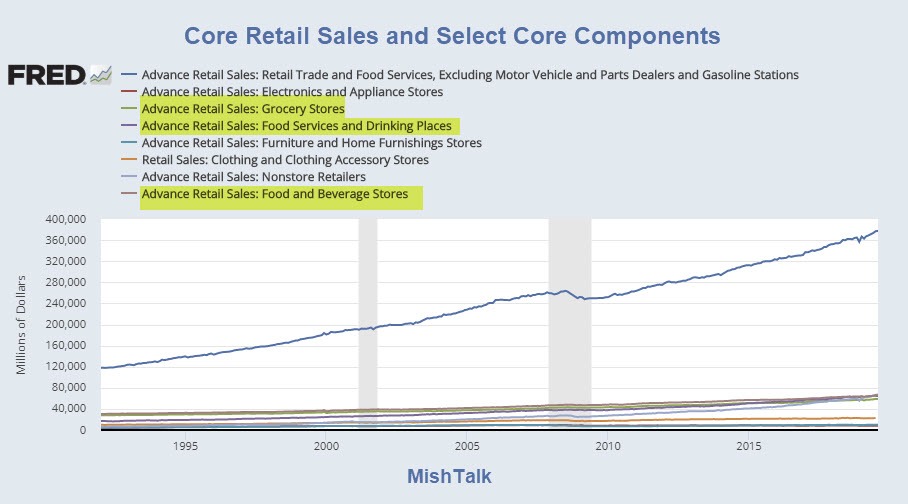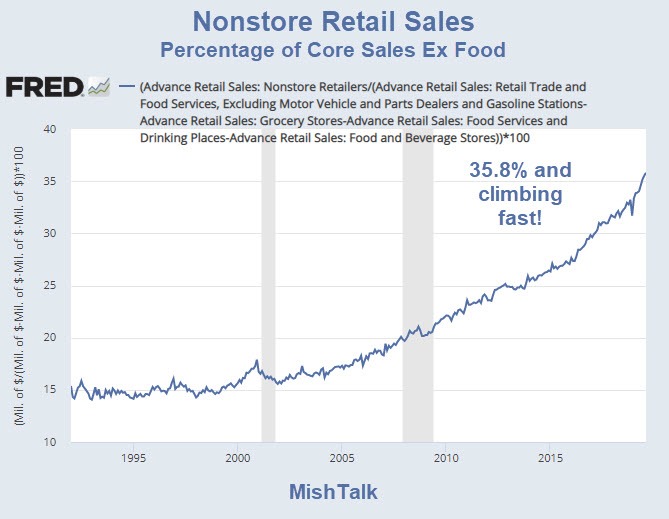
Traditional retailers are getting killed by online shopping, especially Amazon (NASDAQ:AMZN). Five charts tell the story.
Core Retail Sales

Core retail sales are retail sales excluding autos, auto parts, and gasoline.
I calculate 17.9% not 20% as shown in the above chart. But this is nitpicking.
I loved the idea in the lead chart, pulled off Twitter (NYSE:TWTR), and that is why I did this post.
Core Retail Sales Components

Core retail sales include dining out (something impossible to do online), as well as grocery shopping (not realistically possible to do completely online especially meat, other fresh foods, and frozen foods).
Core Retail Sales Minus Food Categories vs Nonstore Retail

Nonstore Retail Percentage of Core Sales Excluding Food

Trend Won't Stop Here
This trend will not stop here.
Auto sales will eventually be mostly online. Dealers will become service centers.
Gasoline will give way to electric.
Uber (NYSE:UBER), Lyft (NASDAQ:LYFT), and rent-on-demand will eventually replace car ownership.
The entire notion of "core" retail sales will itself change as delivery mechanisms and ownership preferences change.
This will not happen overnight. But the trends are clear on multiple fronts.
For now, expect more store retail store closings and bankruptcies.
Enormously Deflationary
The picture I present is enormously deflationary.
Technology is inherently deflationary by any realistic definition.
Fighting this, as central bankers do, is extremely counterproductive.
BIS Deflation Study
The BIS did a historical study and found routine deflation was not any problem at all.
“Deflation may actually boost output. Lower prices increase real incomes and wealth. And they may also make export goods more competitive,” stated the study.
It’s asset bubble deflation that is damaging. When asset bubbles burst, debt deflation results.
Central banks’ seriously misguided attempts to defeat routine consumer price deflation is what fuels the destructive asset bubbles that eventually collapse.
Nothing But Bubbles
Central bankers are hell bent on producing inflation but the result is nothing but bubbles.
Guess what?
Bubbles pop.
Tough Chore
Producing inflation (as measured by central banks) is a tough chore. Negative interest rates don't help.
If producing inflation was easy, Japan would have succeeded long ago.
Of course, there is plenty of inflation. Central banks don't see it because they ignore stock market bubbles and housing prices. They also understate medical costs.
Deflation on Deck
As stated above, bubbles pop. When they do, credit deflation ensues.
Add to that mix, student debt, attitudes on marriage and home ownership, and deflationary demographics.
